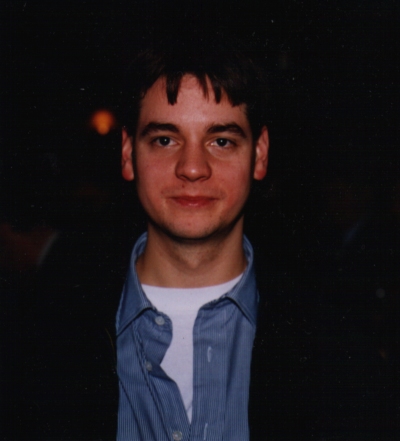From this push experience, it then followed that the only way everyone around the globe could be experiencing the same push from below is if the entire planet was pushing outward in all directions - i.e. expanding.
The next logical conclusion was that myself and every other object around me had to be similarly expanding, since everything remained the same relative size. And this would make sense from the fact that everything was made of the same atoms, which would then have to be equally expanding atoms.
The more I followed this line of thought, the more it moved from a simple abstract thought experiment to a viable explanation of actual real-world experience and observation, continuing through dropped objects, orbits, etc. And it also then occurred to me that this was quite similar to Einstein's actual simple thought experiment that evolved over time into its 'warped space-time' form.
That early experiment was his suggestion that gravity was indistinguishable in every way to being in a box in space where there was no gravity, while being accelerated from below through space at a constant 1g acceleration. All experience and experiments would be indistinguishable from being in that box on Earth.
However, Einstein apparently never considered that Earth was literally that mechanical acceleration from below, as an expanding planet, proceeding instead down the path that led to warped 4-dimensional space-time instead.
Q3. RMT: After that great idea, you set yourself to write a very elaborate and ambitious book re-writing the entire physics. Could you tell us about how you went about it, how long it took, how much research you did, the entire process?
MM: It turns out I had accumulated quite a body of unanswered questions and problematic answers throughout my life, from grade school through university, which I eventually just came to accept and move on. So, once I had the expanding atomic-matter concept, issue after issue flooded back to mind, and as I applied my new perspective I began to find very sensible, satisfactory answers for the first time.
This process continued to the point where I had to start documenting it, and over a period of several months I had what might be considered a very rough start on an annotated first draft of what continued to grow into The Final Theory, published several years later.
Click here for better image resolution
Q4. RMT: The book was finally published, it was a success on Amazon, however it created some controversy. You were confronted by people who could not accept such a radically different way to describe our world, and who could not conceive that neither Newton nor Einstein could be incorrect, although Newton had already been superseded by Einstein. How did you welcome and deal with the success, and the backlash from firm believers in Standard Theory?
MM: I was very pleased with the enthusiastic response from many individual readers, both in the form of online reviews and personal email feedback. It was very rewarding to discover that there were a great many others having similar struggles to find sensible answers to many fundamental questions, and that this new perspective gave them viable answers for the first time, as it did for me.
I was also equally surprised by small groups of people who banded together via chat forums to mount coordinated efforts to attack and defame a book that they clearly had not even read, running on pure misconceptions and false assumptions. I found it particularly saddening that they were trying to mislead as many people as possible who could have greatly benefited from the information in the book - material that I believed, and still do, to be their birth-right of understanding of the world around them and the universe in which they live. Today such efforts are well known as a fairly standard Internet Troll response to just about anything that appears on the radar, but at the time I was very surprised and saddened at this dynamic.
Q5. RMT: Now that time has passed, are you disillusioned about the state of our science? This hot pursuit for dark matter, dark energy, gravitational waves, graviton particles, the Big Bang, black holes, wormholes, singularities, parallel universes, etc., all of which cannot exist within Atomic Expansion Theory? Where have we gone wrong?
MM: I have come to see that our current scientific community is going to continue along as usual, deeply steeped in the various concepts you raise in your question. There is too much history, tradition and both personal and professional investment in that direction to expect anything to change.
Every so often there is also mounting pressure to announce success in one or another of these areas after much time, effort and expense, be it claims of finding a key fundamental particle, of experimental success further supporting an exotic theory, of apparent detection of a new supporting physical phenomena, etc. I'll leave it up to each individual to decide whether they wish to seriously scrutinize and question these claims, but I believe the information in the book will greatly assist any such inquiry.
(Note: You can view every article as one long page if you sign up as an Advocate Member, or higher).






